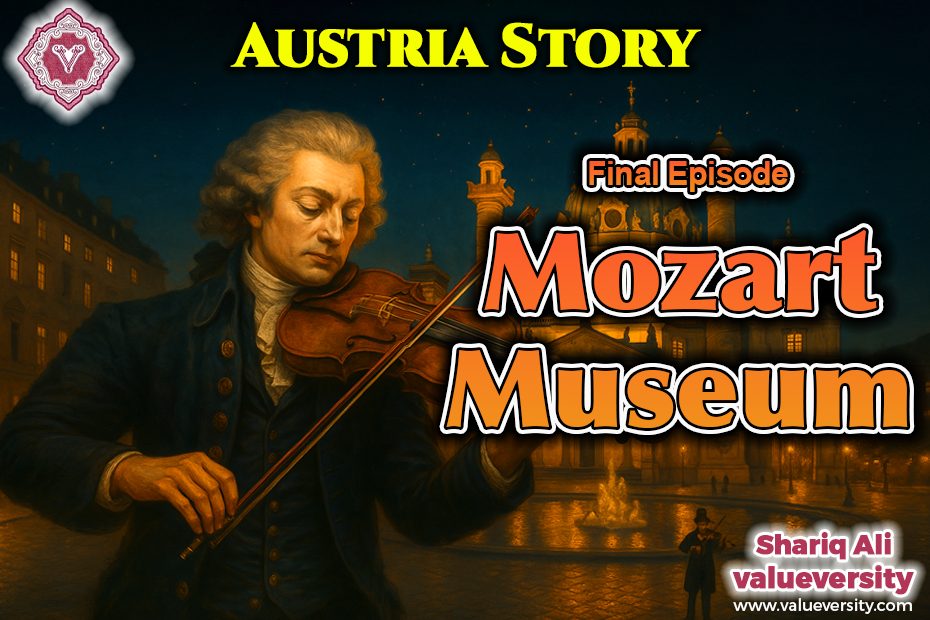Final Episode
Written by Shariq Ali
Valueversity
It was our last day in Vienna. Though the sun was out, a gentle chill in the air created a beautiful harmony. We set off toward the Mozart Museum.
Who isn’t captivated by Mozart’s melodies? Today, we were about to get an intimate glimpse into the life of this legendary artist.
Strolling through the lively heart of Vienna, surrounded by old and new architecture, we arrived at the Mozart House in a narrow alleyway called Domgasse. From the outside, it looked like a modest building, but inside it revealed itself as a charming museum.
After presenting our prepaid tickets, we were handed an informative booklet and a device for the audio commentary.
Each room in this museum, each wall, seemed to tell a story. We even saw the small room where Mozart composed the masterpiece The Marriage of Figaro. It felt as if we had crossed a line in time and were watching him at work. His handwritten scores on the walls, the petite piano, personal letters — everything appeared silent yet deeply meaningful.
Mona whispered in my ear:
“How extraordinary that an artist who lived only thirty-five years could achieve immortality across centuries.”
Born on 27th January 1756 in Salzburg, Austria, this child prodigy began composing music at the tender age of five. At six, he performed at court for the first time.
In his short but illustrious life of just thirty-five years, Mozart created over 600 musical masterpieces — including operas, symphonies, sonatas, and religious compositions.
From an early age, he traveled across Europe with his father Leopold Mozart and performed in cities like London, Paris, Rome, and Vienna.
His most famous works include The Magic Flute, The Marriage of Figaro, Don Giovanni, and Requiem.
In 1791, at the age of just thirty-five, he died under mysterious circumstances. His final masterpiece, Requiem, was completed just days before his death.
As we exited the Mozart Museum, the sun was dipping below the western horizon. Shadows had begun to lengthen. Wandering through Vienna’s streets for a final stroll, we arrived in front of the majestic Karlskirche (St. Charles Church).
This vast and towering structure stood in a spacious square, with a large central fountain and benches around it. We sat on one of the benches and began enjoying the performance of a street musician playing the violin.
The water from the fountain flowed in a gentle rhythm. All around us was life — young couples taking photographs, teenagers roller skating, and elderly folks like us sitting on benches soaking in the scene.
A little distance away, out of sight, a street performer was probably showcasing his talent — his presence revealed by the periodic applause and cheers.
Vienna is not only a city of music but also a witness to history.
When Napoleon Bonaparte conquered Europe, Vienna was a center of his military strategy.
In the 20th century, Adolf Hitler spent his childhood in this city, where the atmosphere helped shape his political inclinations.
This city remained a silent observer to both World Wars, and even today, echoes of untold stories linger within its walls.
Night had deepened. The Baroque-style buildings of Vienna glowed with soft lights. A mysterious beauty surrounded us.
We walked toward the Vienna State Opera House and admired its golden lights before heading toward the underground train station to begin our journey back to the hotel.
Tomorrow morning, we depart. Breakfast, check-out, and then our flight from the airport back to London.
But this stay in Austria — and our final evening in Vienna — will linger long in memory.
— The End —
